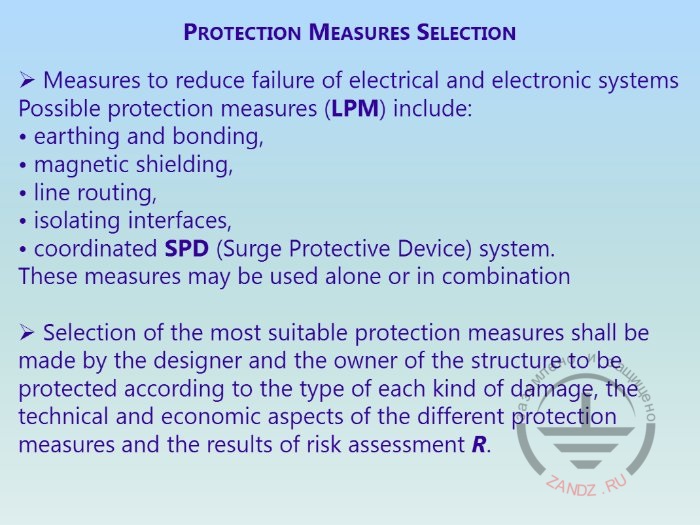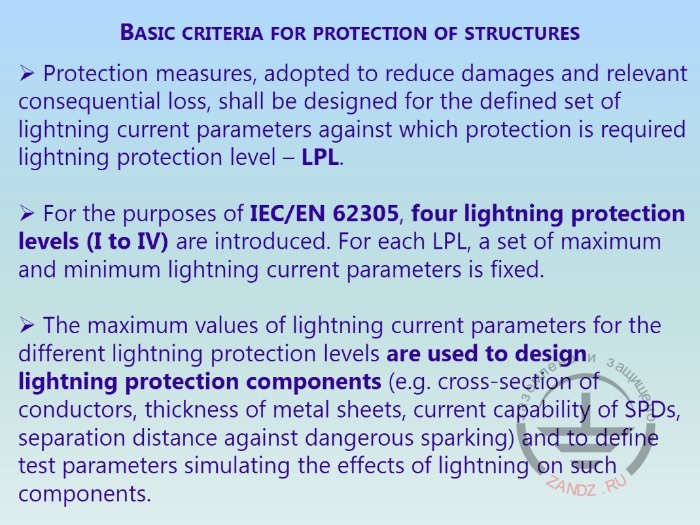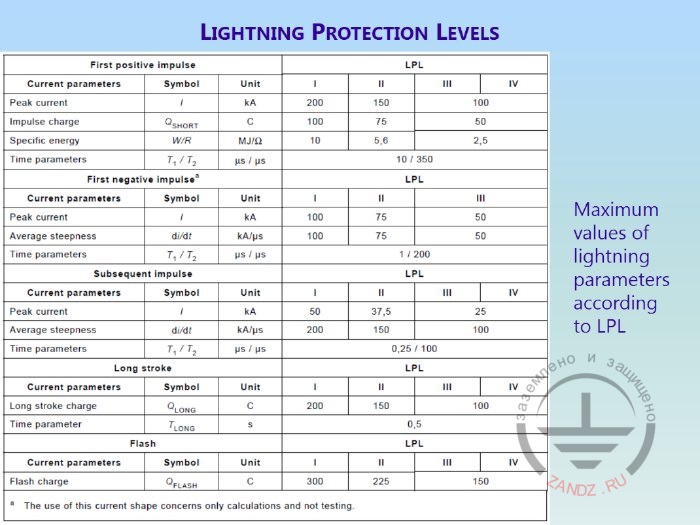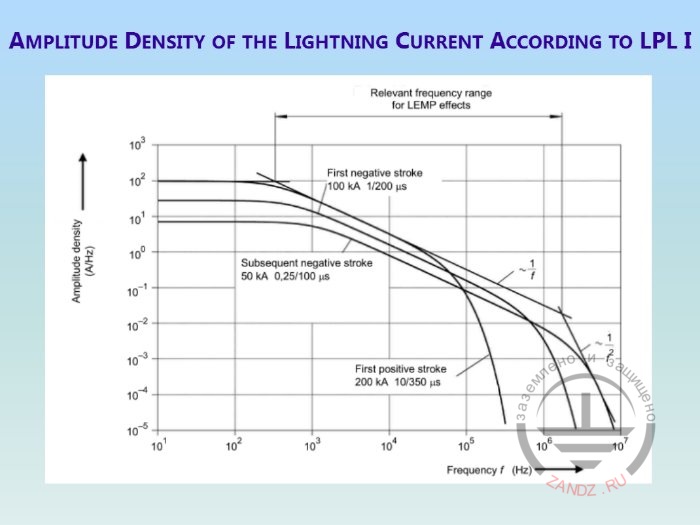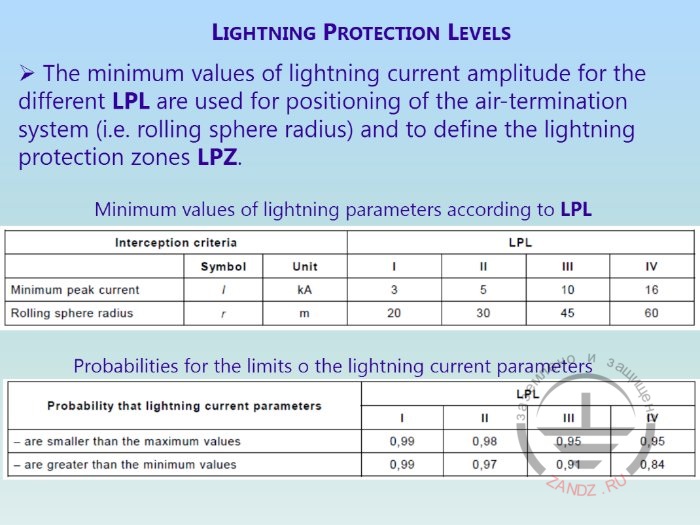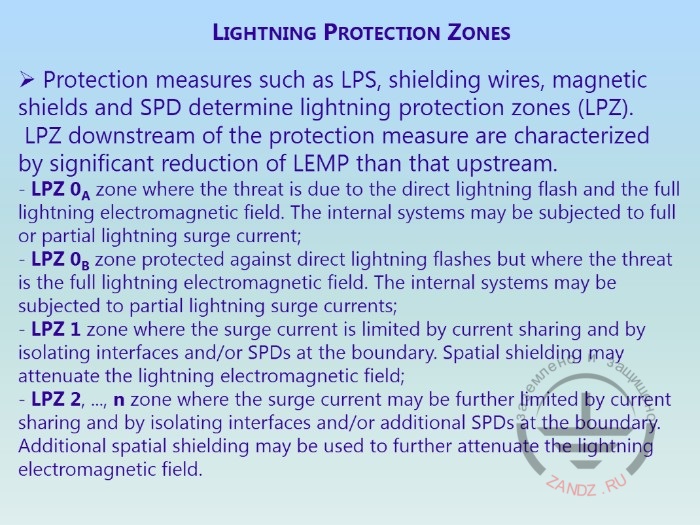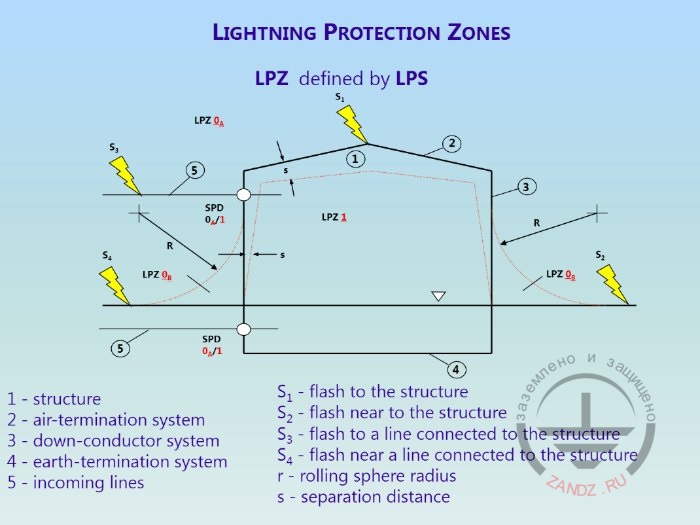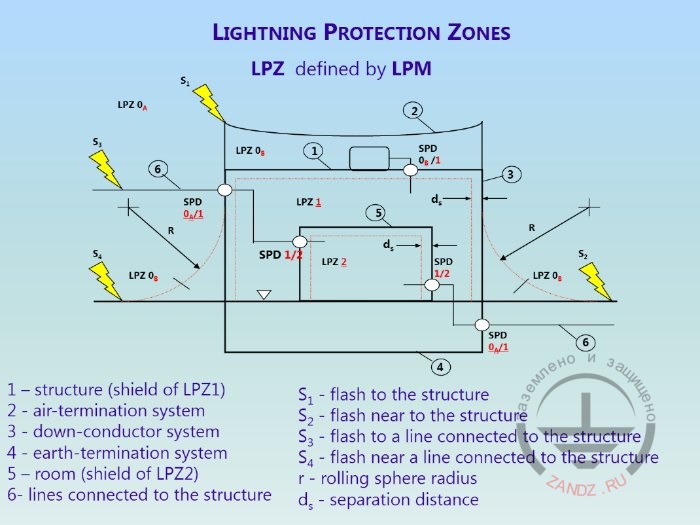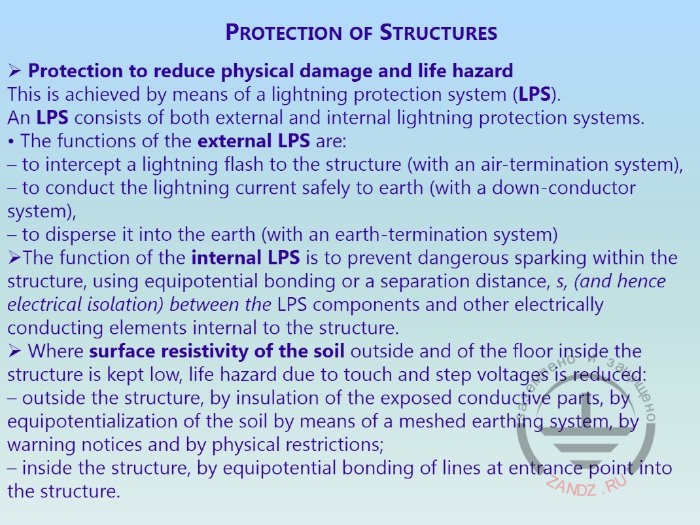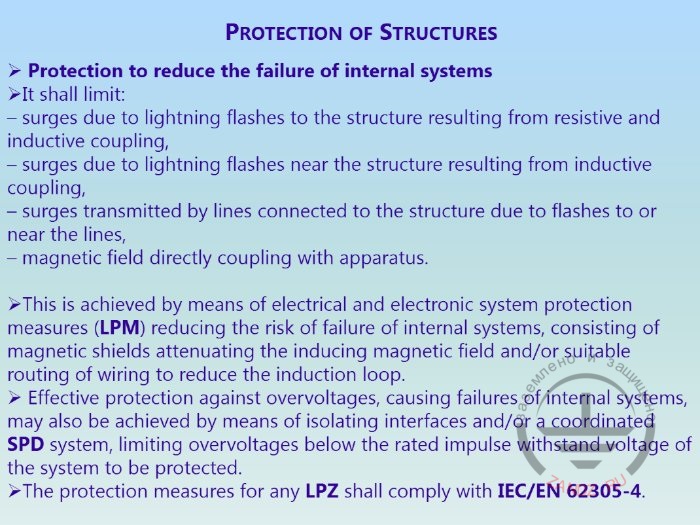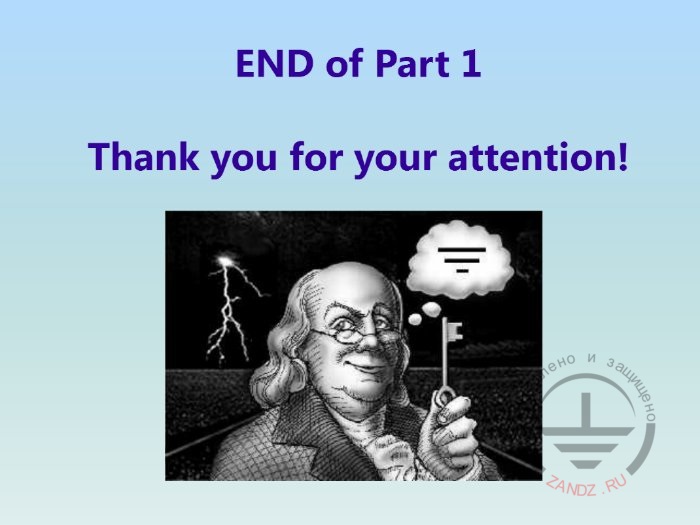The first webinar of a series "Grounding and lightning protection: IEC 62305 standard"
Webinar text. Page 3
Quick navigation through slides:
1. International electrical technical standard IEC 62305
2. Service record of Dr. Marek Loboda
3. Main standard series
4. Risk assessment methods
5. Configuration of IEC standards
6. General topics and parts of the standard
7. Principles of the standard first par
8. Exceptions of IEC standards
9. Descriptions of lightning current parameters
10. Charts of possible lighting components
11. Lightning current parameters
12. Lightning strike impact chart
13. Value of probable current strength
14. First session of questions
15. Damages because of a lightning strike
16. Characteristics of a lightning strike
17. Table of effects from a lightning strike
18. List of possible places of a lightning strike
19. Classification and results of lightning strikes
20. Correlation between types of risks and losses
21. Economic justification of lightning protection. Second session of questions
22. Lightning protection measures
23. LPM — lightning protection measures
24. Main criteria for lightning protection structure
25. Chart of lightning protection levels
26. Chart of lightning protection levels effects
27. Minimal values for lightning protection efficiency estimation
28. Lightning protection zones
29. Description of lightning protection zone LPZ by LPS
30. Description of lightning protection zone LPZ by LPM
31. Protection of constructions part 1
32. Protection of constructions Part 2
33. Questions and answers
Lightning protection requirements
— Selection of protection means refers to the so-called measures LPM - lightning protection measures. It is grounding and bonding, magnet shielding. At a lightning strike, at the lightning current it is important to have magnet shielding. It is necessary to cover this dangerous zone. Laying of trans electric energy is also possible. Installation of electronic or electric systems usually creates inductive effect which brings to magnet inductance and may bring to the voltage overload. We can also increase surface insulation level. And not to use them as potential installations. And the final thing is to use the coordinated system of surge protective devices. These are described in detail in the 4 part. Of course selection of the most appropriate protection measures, they should correspond to each individual case and should be separately designed.
Main criteria for lightning protection criteria
— Not only designers should do that, but the owner of the building to be protected. Risk assessment should be included. Effect of such risks assessment relates to the lightning protection level. There is lightning protection system and it may have various efficiency. In the standards we described four levels of lightning protection, the next one is the fourth. The first level is the most effective, it is effective to 99% and the fourth one is least effective, 80% of protection. It is a very general estimation but it is based on the description of protective zones and efficiencies of grounding systems.
Table of lightning protection levels
— Here you see the table of lightning protection levels. In the second part of this table, in the right part, you see the level: first, second, third and fourth. In the first column you see current parameters. For example, for the first level, for the first strike, depending on lightning protection level will be 200 or 100 kA. If it is the first negative impulse, then in the first two values there will be 100 kA, and on the third - 50 kA.
Table of lightning protection levels
— Here you see the complete table of lightning protection levels. It gives us information on the choice of efficient levels of lightning protection. What relates to the influences of electromagnet pulses - two tables are given here.
Minimal values for the estimation of lightning protection efficiency
— They influence the values, lightning protection levels. These levels relate to minimal values, which can be used when we make the estimation of separation distance efficiency between lightning protection systems. One of the measures used in lightning protection standards 62305 is in rolling spheres. Here you see the correlation of values depending on lightning protection levels. You see increase of lightning strike development. It is based on electromagnetic model of a lightning strike which was described by the professor. One of the probabilities restricting lightning protection parameters also relates to lightning protection measures. Here you see, if the probability of lightning current parameters is less the maximal values, then such values will be in the first line. In the second - if they are larger than minimal values.
Lightning protection zones
— In this part we see information, which relates to lightning protection zones. If you don't mind, I would like to say a few phrases about them.
Description of lightning protection zones LPZ by LPS
— There are descriptions of lightning protection zones LPZ oa, LPZ, ob, 1 in the standards. You can see these zones on the next image, as they are determined from lightning protection structures. If we take lightning rods into account, then the protection is inside the radius created around this system. But outside this zone, we see oA protection zone. If we look at the surge protection system at the entry, for example. Is it necessary to install lightning protection systems at the entry or not? This system of surge protective devices is created for the borders between different zones 0A or 0B. And if this surge protection system is inside these zones, we can of course create the second zone inside the buildings, like on this chart.
Description of lightning protection zones LPZ by LPM
— We see the zones which are determined by various lightning protection parameters, created by different methods of lightning rods, vertical lightning rods, installed in different places, where the line crosses the borders between zones 0A, 0B and zone 1. We need to make an estimation and try to determine places, where lightning protection measures should be applied and create the zones inside the buildings, inside the structures.
Protection of structures. Part 1
— The first one - it is necessary to choose lightning protection system for the so-called lightning protection methods, or in other words - for internal lightning protection system inside the buildings. It should help us to reduce the physical damage and life threat. It can be achieved with lightning protection system which consists of external systems and internal systems of lightning protection.
Protection of structures. Part 2
— I would like to show you. You know that touch and step voltage is a discharge and it is of course very dangerous. In order to protect living beings and buildings from these effects by applying lightning protection measures, magnet protections and routing of electrical wires. It all will help to prevent electric overvoltage of internal systems. It is described in the methodology of lightning protection and it is very important.
The third questions and answers session
— Sorry I took it so long. We have some time for discussions. I wanted to give you the idea of IEC standards at the first meeting. If you have any questions, please write them now. I'll try to answer, of course.
— Yes, it is surge protection device, Marek.
— "Do we install SPDs on group starter board?". I think this question is connected with the place where lightning rods to be put. Of course we know from practice, that if there is a direct lightning strike into the building and the tallest parts of this building or structures of these buildings get direct lightning strikes more often. And it is very important to save these places. It is correct to place a lightning rod near. It is SPD, sorry, I did not get. I will answer if you allow. I will tell on the example. Sorry, I will speak English. I will give you one Polish example.
— The next question: "Models of lightning impact are only mathematical or some experiments were held or maybe statistics collection?". Of course not. Lightning current parameters which are described in the international standard are based on many-years-experience, tests in different countries of the world. Professor Berger - Switzerland, Dr.Popolinsky - Czech republic, their united tests were held in the USA, in Brazil. And there were different publications about parameters which were measured in Poland, professor Spaulus not more than 400 kA. In Russia there were such experiments, if you remember professor Kostenko from Leningrad, nowadays from Saint-Petersburg. But there was great success connected with the possibility of measuring and prolongation of lightning parameters. On the base of the experiments the lightning current value was defined, and it is used in the standards now. See slide 14.
— The recent publication CIGRE. I returned. I showed this first page. You can get it if you join CIGRE. It is not very expensive there. And Russian members of CIGRE get it for free. There are the results of recent measurements of the USA, Austria, Brazil and Germany there. It is not decided if there will be correction of parameters there. Maybe it all bases on modern measurements, but not mathematic calculations.
— The next question: "If lightning protection border depends on lightning rod height?»
— "When the question arises - if the design regulations you named showed real efficiency?". I did not get the question, because if we talk about mathematic models of lightning. There are different models. If you know literature, different lightning models were published. Electro galvanic model was accepted in order to determine on the example of experimental parameters of lightning currents at the border of protection zone, or an angle method which defines the angle of protection or rolling sphere radius is accepted. And the value and radius of rolling sphere depends on the lightning current and angle protection. They are determined on the base of electro galvanic model. So this is the principal of determination of borders, protection zones. "The statistics of reduction of accidents in the result of lightning activity was meant"
— There are no more questions for the moment.
— I would like to thank you for taking part in the webinar. Would you be so kind to click the link in the chat and fill in the questionnaire? We would like to know if you want us to hold such a webinar on risks of lightning protection and expenditures once a month. If you are curious, then I would gladly invite you to the webinar in March. Thank you once again. If you have any questions, please send them to my email address. Thank you very much, best regards. Anastasia, thank you.
— Thank you, Marek! Have a good day. Good bye.
Do you have any questions left? Send them to our technicians and you will get detailed answers.
<< Previous Page
slides 11 to 22
Useful materials for designers:
- Webinars with the leading industry experts
- Everything for the calculation of grounding and lightning protection
- Useful materials: articles, recommendations, examples
Related Articles:


